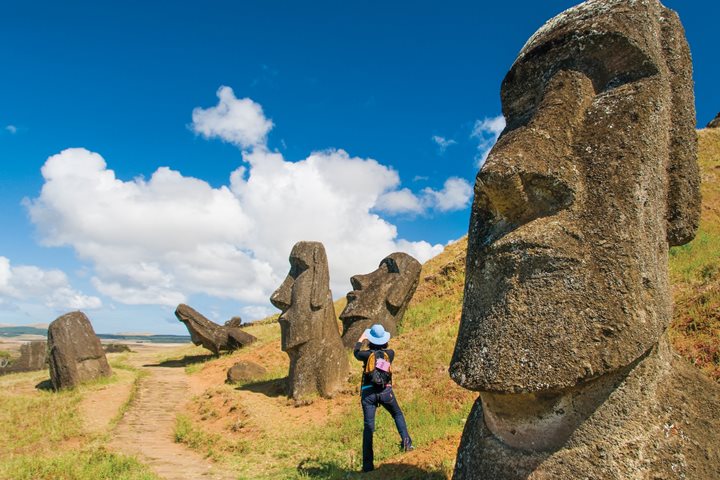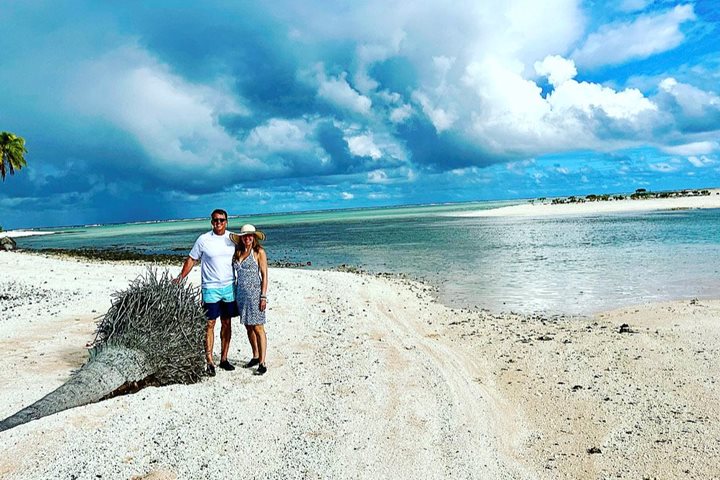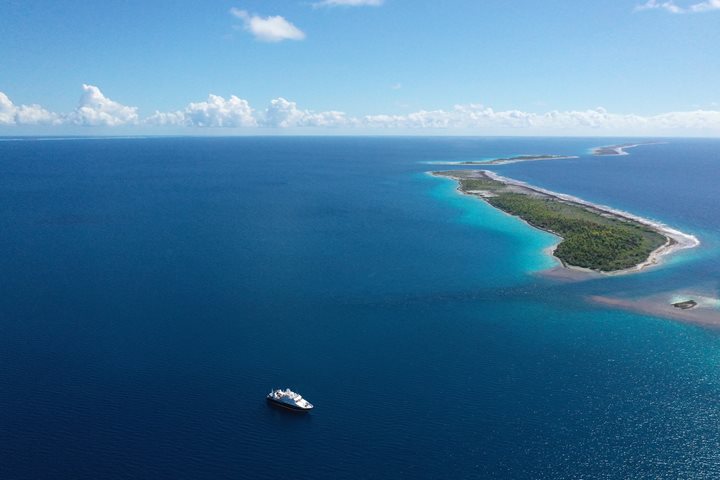Next year, Lindblad Expeditions-National Geographic is returning to the islands of the South Pacific. When one thinks of this part of the world, visions of tropical, lush, green islands surrounded by crystal-clear waters usually come to mind. Most of us probably think we are familiar with the cultural aspects of the people who live here from what we have seen on television and in films. However, these depictions are primarily centered in just two island groups in Polynesia: the Hawaiian Islands and the Society Islands, both of which have had long associations with westerners such as missionaries, whalers, traders, colonizers, and international tourists. Understandably, this unavoidable westernization of the islands has greatly modified their traditional cultures.
Get Inspired by Photos, Videos, Webinars, Stories, and Exclusive Offers.
Sign Up
However, there are many other islands spread throughout the South Seas with which most of us are not familiar. And, many of the people who inhabit these islands—particularly in the regions known as Melanesia and Micronesia, as well as the more remote Polynesian islands—still live in traditional ways, as they have done for millennia. My early days aboard MS Lindblad Explorer in the 1970s were spent exploring these waters, and I have to tell you being able to visit and interact with the friendly islanders and understand how they have perfected survival strategies over countless generations in their sea-oriented lives is both exciting and memorable. This, in my mind, is the most fascinating quality of our new itineraries in the western reaches of the Pacific. Getting to know the local inhabitants and learning about their ways of life are among the most important reasons for our voyaging in these waters.
Consider that these islands all have a mild climate throughout the year, so the inhabitants generally enjoy conditions that allow for simple food gathering and production. Much of their food comes from trees that require little, if any, maintenance and can be enjoyed throughout the year. Fish from the local waters, domesticated pigs and chickens, and a few crops, such as taro, yams, sweet potatoes, and manioc, make up additional staples. The forests supply building materials for traditional thatched house construction. Therefore, the basic necessities are relatively easy to come by, and this affords people plenty of time for artistic and social pursuits. I know from experience that this often consists of gathering around a bonfire on the shore, eating and drinking, telling stories, laughing, and of course, it usually includes singing and dancing.
Dancing to the beat of drums has long been ingrained into the cultures throughout the South Pacific, and still is, an essential part of island life. Dances are traditionally important for many cultural and religious reasons, but they are also used to impress visitors with welcome ceremonies, for storytelling, and for general fun. Dance competitions between individuals and groups, even from different islands, are often organized.
Our new itineraries in the western Pacific have been designed specifically to encounter some of the most fascinating and isolated island cultures, many of which still maintain their traditional Animistic tendencies. Here, we can observe ancient rites seldom seen by outsiders, as well as different welcome ceremonies, types of housing, clothing, social aspects, foods, and of course, a wide variety of traditional songs and dances. And, in all cases these islanders are eager for our visits and the chance to trade and sell some of their incredible works of art and artifacts.
Some of the cultural features we expect to see include the secretive Rom dance that is unique to Ambryn Island, Vanuatu, which is performed by men wearing incredible masks and elaborate full-body outfits that represent spirits. In the Solomon Islands, we’ll learn about the snake and turtle clans on Owaraha and visit their revered spirit house. On the Fijian island of Beqa (pronounced em-beng′a), we will observe the traditional firewalkers who pad barefoot on searing boulders in a sacred fire pit. In Wallis and Futuna, an island group in Polynesia, we will be welcomed with a fierce warrior dance performance and shown a historic "cannibal oven" that dates to the period before 19th-century Christian missionaries converted the inhabitants. On the Micronesian island of Guam, we will learn of the interesting Chamorro culture, which is a blending of Micronesian, American, European, Asian, and Spanish heritage. Tanna Island has an active volcano known as Mount Yasur, which continuously belches smoke and ejects molten rocks high into the sky. This makes for an amazing site for rowdy and energetic dances with wild chanting and masses of people jumping in unison with grass skirts and pounding sticks. And, these are just a few of the amazing cultural properties we expect to experience, not to mention those many facets we don’t expect!
Travel with Tom aboard Under the Southern Cross: New Zealand to Melanesia and Rites & Relics: From the Solomon Islands to Fiji. Or consider one of these other itineraries that encounter remarkable culture in the Pacific:
Tahiti to Fiji: Reefs, Lagoons & Volcanic Isles
Journey Across the Remote Pacific: Taipei to Tahiti





